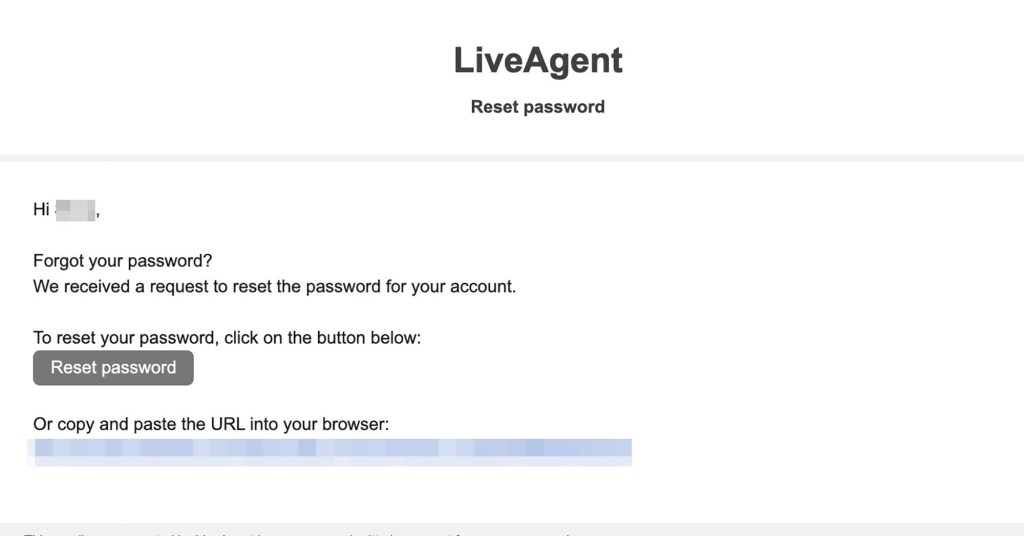You are checking your inbox or moving -you do it on the phone when something attracts attention. It’s a message about a password reset but you never asked for.
Could have reached by email, text message or even through an authenticizing application. It looks legitimate and can be from a service that you really use. Still, something feels outside.
Unresolved password reset messages are usually a precocious alert sign that someone may be trying to access your account. In some cases, the alert is real. In others, it is a false message designed to deceive -you click on a malicious link. In any way, it means that your personal information may be at risk and it is important to act quickly.
Why do you receive password reset emails, you have not requested
There are some reasons why this could happen:
- Someone is trying unauthorized access: Pirates usually test the stolen credentials of data breaches to see where they still work. If you find an account linked to your email, triggering a password reset is a way you try to get control.
- You are addressed through Phishing: The scammers send emails or fake password reset texts that seem official. They are often linked to fake websites stealing login credentials or installing malicious software.
- You are experiencing a credential filling attack: This is when attackers use boats to flood login pages with known usernames and known passwords. If there is something that matches, they will try to reset the password and block it.
- Your two -factors authentication is blocking your login: If you receive a message from your Authenticator app, but you have not tried to log in, it means that someone has your correct password and tries to go through the second layer of protection.
- You may be in front of a SIM exchange attempt: The authentication of two SMS -based factors is vulnerable if someone kidnaps your phone number. If you suddenly stop receiving texts or see password resetties linked to SMS, please immediately contact your mobile provider.
In some cases, the message is legitimate, as can be seen in the following email, but the request did not come to you. It is often a sign that your login details are already in someone else’s hands.
How to identify suspicious password reset attempts
Unclear password reset alerts can take various forms, each with potential fraud or piracy signs:
- Email: Most services will send a password reset link to the inbox. If you have not requested it is a red flag.
- Text message: You can receive a verification code or reset a link using SMS. While many companies use text -based verification, scammers also send fake messages that mimic the real ones.
- Application applications of authenticator: This is often the clearest sign that someone already has your password. If you get a 2Fa message that you do not trigger, someone tries to log in right now and you need your approval to finish the process.
As much as the alert appears, the goal is the same. Either someone tries to deceive -you will deliver your credentials, or you already have your password and you are trying to finish your job.
What do you need to do if you receive an unresolved password reset
If you receive a password reset alert, you have not requested it, treat it as a notice. Whether the message is legitimate or not, acting quickly can help prevent unauthorized access and stop an ongoing attack. Here are the steps you have to take right away.
1. Don’t click anything to the message: If the alert occurred by email or text, avoid click on any link. Instead, go directly to the official site or application to check your account. If the request was real, there will usually be a notification within your account.
2. Check if there is a suspicious login activity: Most accounts have a recent way of seeing your recent session. Look for suspicious activities such as unknown devices, strange locations or login you do not recognize. A login from a location you have never been to can be a sign of a breach.

- Google Accounts: Go to Myaccount.google.com and open the Safety tab to see Recent devices and activities.
- Apple ID: On your iPhone, iPad or Mac, open Settings (or System Settings to Mac), tap your name At the top, move -down to see your Signed devices list and tap any unknown to select Eliminate from the account.
- Microsoft accounts: Visit the account.Microsoft.com, Sign inthen go to Safety > Login activity To see recent access attempts.
- Bank and social media platforms: Look under your profile or settings For login story or devices management.
3. Change your password: Although nothing looks bad, it’s a good idea to reset your password. Choose -a long, complex and unique. Avoid reuse of passwords to different accounts. Consider using a password manager to generate and store complex passwords.
4. Scan the device for threats: If someone has access to your password, there is a possibility that your device is compromised. Use a strong antivirus software to scan for keyloggers or spyware.
5. Report the incident: If the alert came from a suspicious message, report it. In Gmail, tap the three -point menu and select the report phishing. For other services, use the official website to mark unauthorized activities. You can also submit a report to the FBI Internet Crime Center Center if you suspect a scam.
Steps you can take to remove email reset emails
You can take a few steps to try to reduce the number of emails you receive to apply for a password reset.
1. Check your username and password. When you access your account, you may have a typeface on your login information. If you try to repeat access to your account with this error, the company that maintains the account may believe that a piracy attempt is being taken, causing an automatic reset. If your web browser automatically popular your username and password for you, make sure this information is free.
2. Eliminate unauthorized devices. Some accounts have a list of authorized devices to use your account. If a hacker manages to get some of your personal information, one of its devices may be added to your authorized list, triggering account login errors while trying to hack your password. Check the list of authorized devices and delete items you do not recognize.
The process varies, depending on the type of account. We will cover steps for Microsoft, Gmail, Yahoo and Aol.
Microsoft
- Sign in to your Microsoft Acount at t account.Microsoft.com.
- Click on your Profile icon In the upper right hand side and select My Microsoft account.
- Slide -ye down to find the The goals Section and click See all devices.
- You will see a list of devices associated with your account. Click Show details For each one to review the activity.
- If you see a device you do not recognize or no longer use, click on Eliminate the device.
#Pirates #steal #personal #information #password #hack #protect
Image Source : nypost.com
